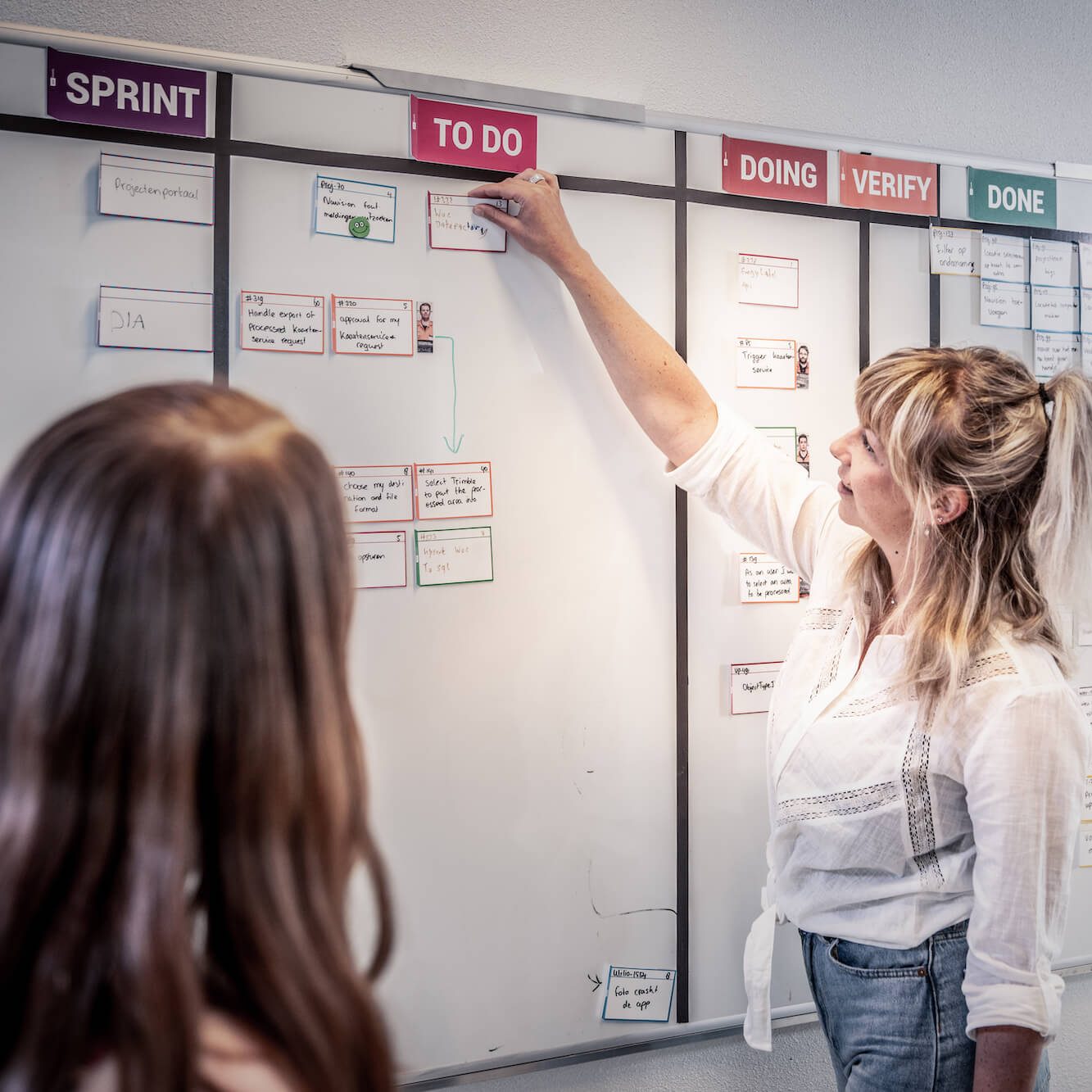Agile working has many advantages that Recognize applies successfully. The flexibility offered by the two-week rhythm during development sprints allows us to make adjustments during the process. Before we actually start sprinting, we also find it important to map out with our clients why we are pursuing something, how we are going to do it, and what we are working towards. This benefits the quality and speed during the development sprints while minimizing unnecessary detours or wrong turns. It is also important that expectations regarding the end goal are clear and consistent for all involved.


The product vision board describes the product vision and strategy. This is where the target audience, needs, product, and goals are addressed.

The storymap is a graphical representation of the product backlog. The storymap provides an overview of the components and requirements.

The architecture provides an overview of the application components and linked systems.

The prototype gives an impression of what the solution will look like. The prototype contains the main screens of the application.
The Sprint 0 process ensures that the business case can be soundly qualified relative to the investment required. The Sprint 0 sessions focus on the creation of the four deliverables. The functionality is worked out at the appropriate level and will be estimated item by item. The system architecture will be designed and tested against the existing and future IT landscape. All these elaborations become visual and “tangible” through the prototype that will be delivered. The prototype is in the form of a clickable design or a working basic application.
It regularly happens that certain components have been developed earlier or are available in the market. If it seems opportune to give this attention so that the development scenario will be more favorable, a make-or-buy analysis is performed for this. This is performed prior to working out the architecture and prototype. Sometimes buying is more favorable, faster, or cheaper than making it yourself. In addition, we are not advocates of reinventing the wheel. We either apply proven technology or concepts or make them better.